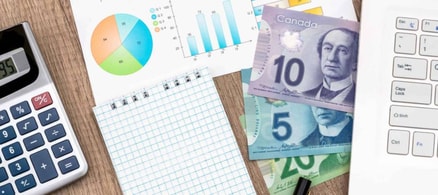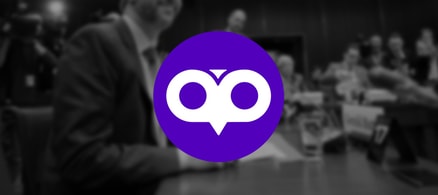Unless you want to work forever, you need to achieve financial independence at some stage of your life. Financial independence is typically accomplished when your passive income exceeds your monthly expenses, thus allowing you to retire from your job. These days, some people are even trying to retire early by using the FIRE-saving strategy – which involves cutting living expenses to the bare bones and investing up to 70% of their net income instead. While that technique works for some, it’s not realistic for everyone. So what can you do to become financially independent? In this article, we outline nine ways to achieve financial independence.
5 ways to achieve financial independence
You can’t wave a magic wand and get financial security in an instant. Even winning the lottery doesn’t mean you will be financially independent for the rest of your life, regardless of what people believe. Rather, financial independence involves building regular passive income streams. Money should be flowing into your accounts without the need to do anything. You need to develop income-producing assets that generate positive cash flows for you. Let’s look at some ways that will help you achieve financial independence.
1. Use the 4% rule
Before you stash the cash, first determine how much you’ll need to achieve financial independence. Some experts claim that you need at least $2 million to retire. But in truth, there is no “magic number” – it really depends on how your lifestyle. But you can start with “the 4% Rule.”
Basically, the 4% rule means that you withdraw 4% of your savings each year for your living expenses. It allows you to keep the principal amount intact and live solely off interest. So if you have $500,000 saved and withdraw 4% annually, that means you have $20,000 to live on for the year. If you saved $2,000,000 and withdraw 4% annually, that means you have $80,000 to live on for the year. Get it?
Unless you’re psychic, there’s no surefire way of calculating your exact expenses in retirement, but the 4% rule can help you “guesstimate” a ballpark figure of what you need to become financially independent. To figure out how much money you’ll need to become financially independent, you’ll need to do the following:
Part 1: Determine your annual total spending
To figure out your total spending, use a simple tool like PocketSmith, a free personal finance app that not only tracks your spending but also helps you plan for the financial future. You can use PocketSmith to plan for major goals like homeownership, debt freedom, or early retirement, as well as track your current spending on groceries, gas, rent/mortgage, and other expenses. But it also includes a suite of tools to analyze and plan for your financial future, even allowing you to forecast up to 30 years ahead. This is a great app for getting a handle on your current expenses, as well as forecasting what your retirement might cost in the future.
Part 2: Multiply that number by your expected years of financial independence
Once you have a clear picture of your current lifestyle expenses, then move on to calculating how much money you’ll need in investments so you can safely withdraw 4% each year. It’s simple: subtract how long you plan to live minus the age you want to stop working (or become financially independent). So if you expect to live to 95 years of age but want to become financially independent at 65 years of age, that means 30 years (95 – 55 = 30) of financial independence. To calculate how the total amount you’ll need to say “sayonara” to working, multiply your current annual living expenses by the number of years in financial independence.
By using simple math, you can figure out how much you’re spending and how much you’ll likely need to save to become financially independent.
But this is also where it gets tough. Anybody who wants to become financially independent has to decide on how they want to live their life now. You’ll have to save a significant percentage of your income if you want to become financially independent. If early retirement is your goal, get comfortable socking away up to 50% of your net income. Because how you spend and save now will determine when you can retire later.
For example, retirement at 65 years of age:
| Life expectancy | 95 years |
|---|---|
| Age of financial independence | 65 years |
| Years of financial independence | 30 |
| Annual living expenses | $60,000/year |
| Projected total needed for financial independence | $60,000 X 30 years = $1,800,000 |
2. Aggressively invest
As we’ve discussed before, there are excellent reasons why you should start investing early. The earlier you start investing, the longer your money has to compound and grow. Also, you’ll have time on your side, which gives you the freedom to take on a more aggressive investment portfolio and benefit from higher returns.
The bottom line? Start investing your money aggressively. It’s scary to think about the possibility of losing your hard-earned cash, but you will not reach financial independence by letting your money sit in a drawer somewhere (or even in a bank account offering a pitiful interest rate). There are two methods I want to recommend for you here – a robo advisor and investing on your own.
Option 1: Robo advisors
Robo advisors are investment platforms that use a ton of data to build a portfolio for you and help your money grow without you having to do much work at all. How does robo-investing work? First, the robo advisor puts my money into a broadly diversified mix of ETFs. From there, it’ll rebalance my portfolio as necessary and make sure I am getting the most out of my money through automated investing.
Our top pick is Wealthsimple because it makes investing so easy. All you have to do is answer a questionnaire that will help identify your risk tolerance, and then Wealthsimple will recommend a portfolio for you. From there, Wealthsimple does the rest.
Option 2: Online brokerage
If you prefer to pick investments on your own, that’s fine too. As long as you know what you’re doing. The first thing you will need to do is choose one of the best discount brokerages in Canada. Questrade is our top choice because of its ultra-low fees (free ETF purchases!) and intuitive trading platform. You can read our full Questrade review to find out all the reasons why we love this discount brokerage.
If you have less than $100,000, I would recommend starting by investing in ETFs. ETFs trade like stocks, but they are a basket of a bunch of other stocks. The beauty here is that you become instantly diversified.
Once you cross that $100,000 mark, I would recommend investing in individual stocks, but still staying diversified. This means you should have at least ten different stocks in different industries so that you can balance your risk.
3. Pick an “FI” lifestyle
“FI” stands for “financially independent.” But you’ll also hear the phrase “FIRE,” which means “financially independent, retire early.” That being said, there are two schools of thought when it comes to achieving “FIRE.” Both methodologies/lifestyles have the same end goal – to reach financial independence. But they vary in how you spend, save, and live your life. I’ll highlight both below so you can determine which (if either) suits you.
Option 1: leanFIRE
leanFIRE is a lifestyle that requires you to spend very little money each month. For example, many people in the leanFIRE community will recommend spending less than $3,000 total per month.
Yes, it’s almost like living like you were in college. If you want to follow a strict leanFIRE lifestyle, you’ll need to be super frugal and change your perspective on what are needs and what are wants.
You may also have to forego things that can sink your savings, such as a car or a “McMansion” in a prime locale. In fact, some strict on the leanFIRE lifestyle use it to determine where they live. For example, you’ll spend a heck of a lot less living in Guelph, Ontario than you would in Toronto or Vancouver.
Option 2: fatFIRE
Alternatively, you can choose to live with a little more luxury with a “fatFIRE” lifestyle. This methodology aims to let you have some beautiful things, but also achieve the goal of financial independence. The biggest downside is that it’ll take longer to achieve financial independence with this style.
To follow fatFIRE, your spending should be close to in-line with national averages. For example, the average cost of living in Toronto for a family of 4 is around $45,490.92, plus the average cost of a medium-sized apartment is about $1,400 a month. So if you plan on living in “the 6ix,” target your annual spending at $62,000 per year (or about $4,600 per month), including housing.
Either way, to reach FI faster, you’ll need to spend less but also make more money every way that you can – which is the next step in achieving financial independence.
4. Make more money
If you’re a financial analyst in Canada making an average of $42,722 (according to TransferWise), you sure as heck can’t spend the “average” of $62,000 per year. The reality is, that you need to earn more money to get to financial independence faster (or at all).
By making more money, you’ll be able to boost your savings percentage and reach “FI” much sooner. Obviously, the easy way to make more money is to just make a higher salary. But if earning a higher salary were that easy, we wouldn’t be writing this article. That’s why you should look into getting a side hustle.
There’s a fast way to start generating ideas for a side hustle, taken from author Chris Guillebeau, who wrote the book Side Hustle. He says that for an idea to become a viable side hustle, it has to be feasible, profitable, and persuasive. He says that idea is feasible if it:
- Motivates you
- Can earn you money
- Can be accomplished in a short amount of time
To determine if your idea is profitable, he says to explain the merits of your proposal to potential clients in just two sentences. If you can’t do that, then they probably won’t be paying clients any time soon.
Finally, an idea is persuasive if you can convince people to pay more because you do something better or different. For instance, an example Guillebeau uses in the book is of someone who went from drawing caricatures for $100 an hour to earning $250 an hour by leveraging digital drawing technology – something her customers hadn’t seen before and thus were willing to pay more for the “wow” factor.
This won’t solve all your questions about which side hustle is best for you, but it should give you a head start. Chris Guillebeau lays out a ton of great content and ideas in the book, so I’d recommend picking up a copy.
5. FIRE saving strategy
If achieving FIRE is your top priority, consider cutting unnecessary costs to the bone. This means avoiding things like monthly services you don’t need (i.e. gym memberships and streaming accounts that you don’t use) and cutting back on everything else you possibly can. It also means limiting the new things you buy. That might mean taking public transportation instead of buying a new car. Or if you buy a new car, buy a cheap used one instead of a new car.
Overall, the goal here is to cut back everywhere you possibly can. A smart thing to do would be to create a budget using a dollar-based system (meaning you assign dollars to specific categories and only budget money you have) like You Need A Budget. This handy app tracks your cash flow, with new YNAB users saving on average $600 by the second month and more than $6,000 in their first year (!). I’ve personally used YNAB for years, and it’s completely changed the way I think about money.
Another option? Use KOHO – a free pre-paid, reloadable card and integrated app that gives real-time insights into your daily spending. It’s all the rage these days: this no-fee card functions like a chequing account but with the benefits of a credit card, even giving you cash back on all your purchases. But unlike a credit card, you’re tapping into cash and not racking up credit card debt. So that means you’ll likely be more mindful of your spending and save more money. In fact, the average KOHO user saves roughly 7% of whatever money they load into their account. Earn 1% cash back on groceries and transportation. Earn up to 5% extra cash back when shop with partnered merchants. Plus, earn up to 2.00% interest on the entire KOHO account balance without any minimum deposit requirement.
Summary: Yes, you can!
To recap, there are five main steps to reaching financial independence. The first is to apply the 4% rule: start by estimating how much you’ll actually need to achieve financial independence. Once you’ve got your number, start investing aggressively. Your best bet is to set up automated deposits to a robo advisor like Wealthsimple or an online brokerage like Questrade. With those boxes ticked, move on to choosing an “FI” lifestyle (if that suits you), cutting costs, and boosting your monthly income. If you do all of these five things, you’ll be well on your way to achieving financial freedom.
You might not be able to do everything on this list – and that’s okay. The reality is, that you never know what tomorrow will bring. Just do what you can with what you have. I’m not suggesting you go out and blow your money, but plan for the unexpected. For example, my father-in-law lived “leanFIRE” his whole life but then got cancer in his mid-60s. This caused massive disruption to his finances for many reasons.
The bottom line? Don’t make yourself miserable now just to retire early. Find balance, be realistic, and do what works for you.





